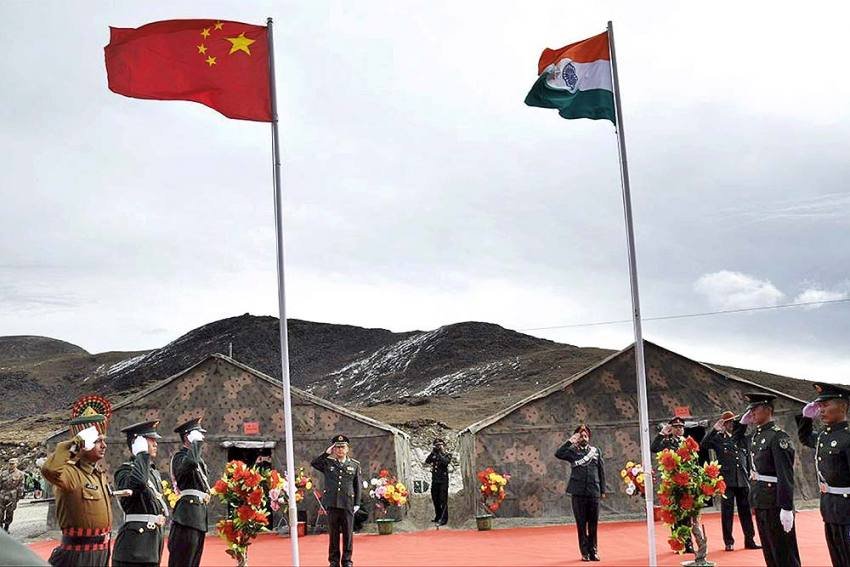NEW DELHI, Dec 22 (PTI): In the backdrop of fresh tensions over the clash between their troops in the Tawang sector, India and China on Tuesday held the 17th round of high-level military talks on the eastern Ladakh border standoff but there was no indication of any forward movement in resolution of the remaining issues.
A joint statement released on Thursday said both sides exchanged views in an “open and constructive” manner to resolve the “relevant issues” and that it was agreed to maintain “security and stability” on the ground in the region.
The senior military officers of the two sides held the dialogue at the Chushul-Moldo border meeting point on the Chinese side of the Line of Actual Control (LAC) in eastern Ladakh and it lasted for around 10 hours, people familiar with the matter said.
The talks took place 11 days after the clash at Yangtse area along the LAC in the Tawang sector of Arunachal Pradesh.
The statement said the two sides agreed to stay in “close contact”, maintain dialogue through military and diplomatic channels and work out a mutually acceptable resolution of the remaining issues at the earliest.
It is learnt that the Indian side insisted on resolving the issues at the remaining friction points of Demchok and Depsang in eastern Ladakh as soon as possible.
“Building on the progress made after the last meeting (16th round) on July 17, the two sides exchanged views on the resolution of the relevant issues along the LAC in the Western Sector in an open and constructive manner,” the statement said.
“They had a frank and in-depth discussion, keeping in line with the guidance provided by the state leaders to work for the resolution of the remaining issues at the earliest which would help in restoration of peace and tranquility along the LAC in the Western Sector and enable progress in bilateral relations,” it said.
In line with a decision taken at the 16th round of military talks, the two sides carried out disengagement from Patrolling Point 15 in the Gogra-Hotsprings area in September.
“In the interim, the two sides agreed to maintain the security and stability on the ground in the Western Sector,” the joint statement said.
“The two sides agreed to stay in close contact and maintain dialogue through military and diplomatic channels and work out a mutually acceptable resolution of the remaining issues at the earliest,” it noted.
The fresh round of Corps Commander-level talks on the eastern Ladakh row came over a month after Prime Minister Narendra Modi and Chinese President Xi Jinping shook hands and exchanged pleasantries at the G20 summit in Bali.
On the clash in the Tawang sector, defence minister Rajnath Singh said in Parliament on December 13 that the Chinese troops tried to “unilaterally” change the status quo in the Yangtse area but the Indian Army compelled them to retreat by its firm and resolute response.
External affairs minister S Jaishankar on Monday said the Indian Army will not let China change the status quo along the LAC “unilaterally” and its current deployment along the frontier was not seen before.
When asked about the Tawang incident, Bagchi said he would not like to comment and referred to the statement made by defence minister Singh on the matter.
To another question on whether similar incidents happened in the past in the region, he said there were incidents when Indian troops stood firm and “you are aware of that.. we have been emphasising that our soldiers will stand firm to guard our frontiers”.
Replying to a separate query on whether the Tawang incident was flagged by the Indian side at the military talks, Bagchi said he would not like to speculate as he does not have a confirmation on it.
India has been maintaining that its ties with China cannot be normal unless there is peace in the border areas.
The eastern Ladakh border standoff erupted on May 5, 2020, following a violent clash in the Pangong lake area.
The ties between the two countries nosedived significantly following the fierce clash in the Galwan Valley in June 2020 that marked the most serious military conflict between the two sides in decades.
As a result of a series of military and diplomatic talks, the two sides completed the disengagement process last year on the north and south banks of the Pangong lake and in the Gogra area.
The disengagement in the Pangong Lake area took place in February last year while the withdrawal of troops and equipment in Patrolling Point 17 (A) in Gogra took place in August last year.







